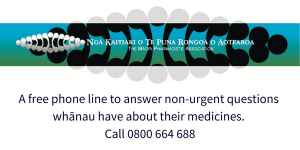Tranexamic acid is used to reduce or stop heavy bleeding caused by heavy menstrual periods, nose bleeds, dental procedures or surgery (operations). Tranexamic acid works by slowing the breakdown of clots. When you bleed your body forms blood clots to stop the bleeding. In some people, these clots break down (or dissolve) causing too much bleeding. By slowing the breakdown of clots tranexamic acid prevents further bleeding. In New Zealand, tranexamic acid is available as tablets (500 mg) and can also be given as an injection in the hospital.
Low or no data? Visit zero.govt.nz, scroll down the page then click on our logo to return to our site and browse for free.
Tranexamic acid
Sounds like TRAN-ex-AM-ik AS-id
Key points about tranexamic acid
- Tranexamic acid is used to reduce or stop heavy bleeding.
- Tranexamic acid is also called Cyklokapron®.
- Find out how to take it safely and possible side effects.

- The usual dose of tranexamic acid is 2 or 3 tablets taken two or three times a day.
- Some people may need higher doses.
- Always take your tranexamic acid exactly as your doctor has told you. The pharmacy label on your medicine will tell you how much tranexamic acid to take, how often to take it, and any special instructions.
- Take your tranexamic acid tablets at the same times each day.
- Swallow your tablets with a glass of water.
- You can take tranexamic acid with or without food.
- If you forget to take your dose, take it as soon as you remember but if it is nearly time for your next dose, just take the next dose at the right time. Do not take double the dose.
Like all medicines tranexamic acid can cause side effects, although not everyone gets them.
| Side effects | What should I do? |
|---|---|
|
|
|
|
|
|
|
|
|
|
| Did you know that you can report a side effect to a medicine to CARM (Centre for Adverse Reactions Monitoring)? Report a side effect to a product(external link) | |
The following links have more information on tranexamic acid.
Medsafe consumer information sheets: Cyklokapron(external link)
Resources
5 questions to ask about your medications(external link) Health Quality and Safety Commission, NZ, 2019 English(external link), te reo Māori(external link)
References
- Tranexamic acid(external link) New Zealand Formulary
- Tranexamic acid for the treatment or prevention of bleeding(external link) Medicines for Children, UK
Credits: Sandra Ponen, Pharmacist, Healthify He Puna Waiora. Healthify is brought to you by Health Navigator Charitable Trust.
Reviewed by: Angela Lambie, Pharmacist, Auckland
Last reviewed:
Page last updated:





